Features
The 50 Greatest SNES Games
Part Two

Top 50 Super Nintendo Games
You might not believe it, but it’s absolutely true: the Super Nintendo Entertainment System, or the SNES, for short, is now old enough to have serious regrets about its life, and if you’re old enough to have had one of these wee grey boxes in your living room, then you’re probably even older.
Inspiring stuff right? In all seriousness, though, the SNES is certainly one of the all-time greats in the console department and now that Nintendo is starting to add SNES games to the online Switch library, what better way to celebrate than to list our top 50 SNES games.
We gathered together some of our best and brightest to help us celebrate, and we hope you’ll join us too!
** This is the second half of this list. Click here for the first half. **
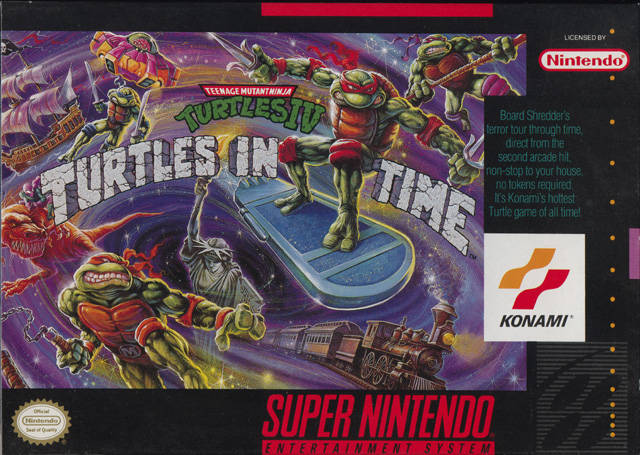
Teenage Mutant Ninja Turtles IV: Turtles in Time
Based on the original 1987 TNMT animated series, Turtles in Time is a side-scrolling beat’em up for the SNES. The game takes you, as the name implies, back through time as you battle Shredder’s foot army and get back the Statue of Liberty which Krang stole. The game produced so many fun moments such as surfing in a sewer while battling reptiles, and fighting our favorite classic Saturday mornings cartoon villains like Bebop and Rocksteady and ultimately facing Krang himself in the Technodrome.
Another memorable aspect to the game would have to be the soundtrack. The music in the game was so upbeat it lent itself well to the action and it even had the “Pizza Power” song from the TMNT live concert! It could be just me that realized that fact or even remembered that there was a time where there was a live concert tour. Anyhow, the game got itself a remake called Turtles in Time Re-Shelled in 2009 for Xbox Live and PSN. Turtles in Time is probably the best game the series ever produced and a classic to anyone, certainly everyone who grew up as a kid in the 90’s. (Aaron Santos)

#24. F-Zero
F-Zero was one of the original North American launch titles for the SNES. Set in the the year 2560, the game revolves around a racing circuit known as F-Zero, which is financed by multi-billionaires who profit from human civilization’s expansion into the cosmos.
Even after all these years, it remains remarkably impressive from a purely visual standpoint. Critics lauded F-Zero for its fast and challenging gameplay, variety of tracks, and the Mode 7 rotational and scaling effects — which were relatively new back in 1990. Although the N64 sequel would add more racers and the ability to use a spin attack on your rivals, the SNES original set a standard for the racing genre and lay down the blueprint for Super Mario Kart, which would emerge from Nintendo’s labs not long after.
From the tight controls and perfect sound effects, to the fantastic music and the impeccable course design, F-Zero reinvigorated the genre and inspired the future creation of numerous racing games – not to mention, the game also introduced Captain Falcon/The Blue Falcon, Dr. Stuart/The Golden Fox, Pico/Wild Goose, and Samurai Goroh/Fire Stingray. (Ricky D)

#23. Contra 3: The Alien Wars
Set in the year 2636, the alien invaders that were defeated during the previous Contra installments have returned and launched a full-scale attack against mankind. The Alien Wars was the fourth Contra game to come to the States, after Contra and Super C on the NES and Operation C on the Game Boy. While previous Contra games drew inspiration from action movies like Rambo, Contra III features a host of Hollywood blockbuster references including enemies who appear straight out of an early James Cameron film (Terminator, Aliens).
Replacing the jungle-themed levels is a post-apocalyptic metropolis overrun by alien invaders, and the identities of Bill and Lance (the original Contra heroes), were swapped with their descendants Jimbo and Sully. The power of the Super NES allowed for better graphics, enhanced sound and unique new spins on the classic run-and-gun gameplay – bringing it closer to the quality of their arcade counterparts.
The level design is more complex and the players are more flexible – able to grab on to poles or ceilings, climb walls and ladders, grapple up walls and somersault through the air. The player can also shoot in eight possible directions without moving or jumping. In addition, the levels in The Alien Wars involve two Mode 7 enabled top-view stages. The Contra series has always been known for its difficulty, begging even the most practiced of gamers to cheat, but Konami used every trick up it’s sleeve to make Contra III: The Alien Wars the ultimate SNES shooter and even removed the famous Up-Up-Down-Down Konami Code (which normally grants players 30 lives in the first Contra titles).
Without the classic cheat, there’s no easy way out. Contra III is arguably the best installment in the Contra series, a game which plays like a 80s big budget Hollywood film, with action that is just as fast and furious. (Ricky D)
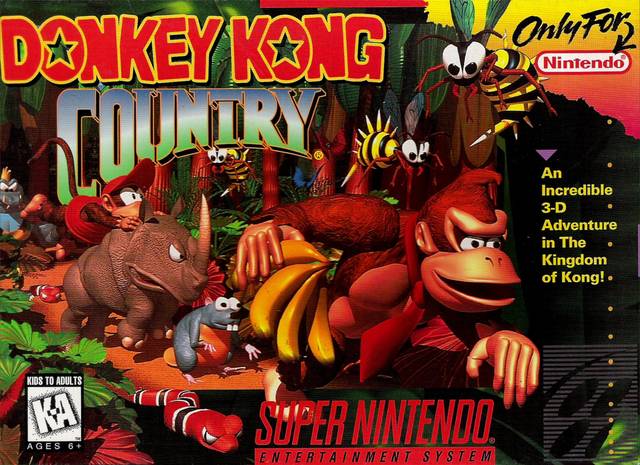
#22. Donkey Kong Country
In 1994, with the release of the Saturn and Playstation on the horizon, the Super Nintendo needed a visually impressive killer app to reinforce its market dominance, and Donkey Kong Country fulfilled the calling. It creatively recast a classic Nintendo villain as the titular hero; gave him a varied, gorgeous landscape to jump through, provided him with his very own Luigi-like sidekick, Diddy Kong; and gave him a unique set of skills, such as the ability to tag-team with his partner, give him a piggyback ride, and throw him at enemies.
The stunning graphics not only showcased the sturdy capabilities of the console, but also helped build atmosphere. Donkey Kong Country was not just a tech demo for what the SNES could accomplish in the 32-bit era. To complement the athletic platforming in caves, forests, mountaintops, and industrial spaces, there were immersive moods, dramatic lighting, and an alternatively infectious and eerie soundtrack. Beyond its historical role, Donkey Kong Country remains an endlessly enjoyable classic. (Guido Pellegrini)
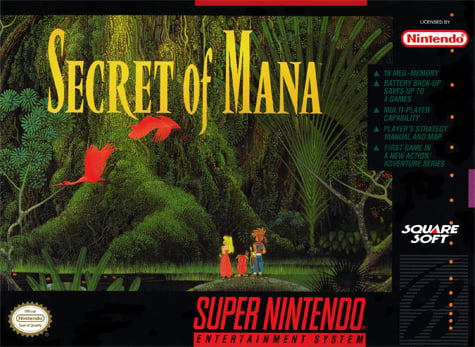
#21. Secret of Mana
As action-RPGs started to gain in popularity in the mid-90s, many game companies began cashing in on this new trend. Square (now Square Enix) developed and produced possibly the 2nd best of the 16-bit era: Secret of Mana, the sequel to the 1991 game Seiken Densetsu (released in North America as Final Fantasy Adventure).
Although the storyline isn’t quite as epic as Square’s Final Fantasy series of games, the result is a visually stunning, and highly original, action-packed role-playing title that’s become one of the most beloved RPGs ever created. Unlike its 16-bit contemporaries Final Fantasy III and Chrono Trigger, Secret of Mana is an active-time RPG — in other words, its battles take place in real time. This unique battle system is just one of the many reasons Mana is still recognized today as one of the best games ever made. It also offered another major breakthrough for the genre; Secret of Mana allowed for up to three players to control your party members if you had the proper setup (the game cartridge, the system, three controllers and the SNES Super Multitap accessory).
Each character is distinctly individual and all three of the characters must work together in order for the party to succeed. The game received considerable acclaim for its bright colorful graphics, expansive plot, its Ring Command menu system and the incredible soundtrack by Hiroki Kikuta. Squaresoft proved yet again that it is indeed one of the world’s master RPG makers. Following the releases of Sword of Mana on GBA, plus spin-offs Children of Mana and Heroes of Mana on DS, be sure to go back to the series’ roots and find out why Secret of Mana is so wonderful and charming. (Ricky D)

#20. Actraiser
ActRaiser was one of the first games to hit store shelves following the launch of the SNES in North America and it was also one of the first games to really show off the capabilities of the console. The graphics demonstrated the system’s ability to push rich 16-bit colors and multi-layered backgrounds, while Yuzo Koshiro’s emotionally evocative musical score is often regarded as one of the best of the era.
ActRaiser received a considerable amount of praise for successfully blending two genres seamlessly, being both an action-platformer and a city builder. The mix of the two was not always a success but the contrasting differences between the two genres added to the appeal of the game. Twenty-five years later and I still have yet to see a game similar to it. And even today ActRaiser holds up extremely well. (Ricky D)

#19. Shadowrun
Based on a tabletop roleplaying game of the same name, Shadowrun was a hidden gem that stood out from its contemporaries thanks to its unique setting and real-time action gameplay. The world of Shadowrun borrows heavily from cyberpunk lore (think Neuromancer), and the atmosphere is heavily influenced by Ridley Scott’s 1982 classic film Blade Runner. Set in a cyberpunk metropolis (a futuristic version of Seattle) during the year 2050, the story follows a crime-noir plot loosely based on the novel, Never Deal with a Dragon, written by game creator Robert N. Charrette.
For a 16-bit game released in 1991, the plot is so thick, there’s enough here for a Netflix series. Mega-corporations rule over practically everything, hackers take over the planet and magic spells, dragons, samurai, wizards, dwarves, elves, orcs and trolls all coexist in the same city. You play as a man named Jake Armitage who’s gunned down in the game’s opening moments, only to awake somehow in a morgue – with amnesia. From there you fight vampires and zombies and anything else that stands in your way.
During the 16-bit era, there were three Shadowrun games, published for the SNES, Genesis, and Mega CD platforms. Each of them was made by completely separate developers and offer entirely different takes on the story, but the SNES version is often regarded as the very best of the bunch. The title’s unique setting and gameplay earned it critical success, but sadly it actually flopped commercially. Thankfully, after years of calls for remakes and sequels, a successful Kickstarter campaign resurrected the franchise with Shadowrun Returns and Shadowrun Dragonfall. (Ricky D)
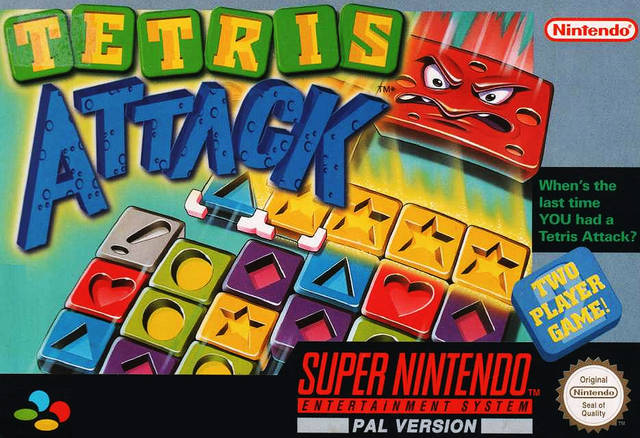
#18. Tetris Attack
What is there to say about Tetris Attack that hasn’t been said already? The classic Tetris formula has been scrapped in favor of competitive match-three action set in the Mario universe. This title sports some of the most addictive puzzle gameplay ever created, especially when playing against another person. Matching three blocks together clears them, however, skilled players will go for multiple clears back to back to rack up enough blocks to place on your opponent’s screen. Once the blocks hit the top of the screen, the game is over.
The gameplay is simple but the skill cap is huge, meaning there is almost always room for improvement. Gamers who prefer to play solo are in for a fun, albeit challenging, experience as well. The villains of the Super Mario Bros. series form a path to the final battle with Bowser. Each battle is more challenging than the last, and while this mode isn’t particularly lengthy, it’s a blast to replay on higher difficulties.
It says a lot about a game when its formula has been copied time and time again by other series. Tetris Attack separates itself from these clones because of its charming aesthetic. It’s an ageless formula that provides a fun time for gamers of any skill level and is sure to be played competitively for years to come. (Zach Rezac)
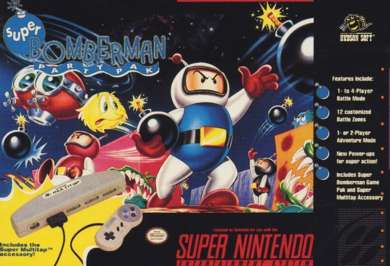
#17. Super Bomberman
Super Bomberman is full of bombs. And power-ups. And stalking your friend down a dead-end corridor so you can seal them in and blow them sky high. This is not a game that requires a Ph.D. and a grande, quad, non-fat, no-whip, mocha decaf. This is a game you play shirtless and sweating in your parents’ living room, wondering how your big brother can still beat you after 23 years.
The game has an overlooked single player campaign. So as to not break with tradition, its best to skip straight to Battle Mode.
If a professor were to make a case that being engaged in Super Bomberman’s multiplayer was akin to being permanently in a state of fight-or-flight, they would likely have a PhD and be asked to turn the lights off on their way out. But four-player Battle Mode is still incredible. Bombs are laid, thrown, and kicked right in your face. Games are over in minutes. The pace is brutal, and one bad move means the difference between life and death – not that any avatar in Super Bomberman’s cartoony universe takes it seriously.
This SNES Hall of Famer still feels “of the right now”. The sequel’s music is arguably better, and the addition of the Gold Bomberman was a clever incentive, but everything the second game stood for was built here. Even its graphics don’t feel overly dated. Again, the cartoonishness helps.
Nothing about Super Bomberman sought to change the world, but it was a game made beautiful by its simplicity. Killing someone was pretty easy, and not blowing yourself up with your own bomb often impossible.
Highly replayable to this day. (Luke Geraghty)

#16. Super Castlevania IV
It’s hard to talk about the Castlevania franchise without bringing up Super Castlevania lV. Taking everything that worked from the NES titles and throwing out everything that didn’t, this 1991 masterpiece’s challenging gameplay and gorgeous visuals easily earn it a spot on this list. The soundtrack is also one of the best in the series, with tunes ranging from haunting melodies to catchy rock-influenced tracks.
lV also represents the first huge gameplay change in the series. Simon could now throw his whip in eight directions, which made for much better platforming and combat. Deaths were much less frustrating than in previous titles because of the amount of control the player had over Simon. Graphically, there aren’t many prettier games on the console. Sprites are large, detailed, and gruesome looking, with huge bosses looking especially impressive on the new hardware. Fan favorites like Death and Dracula make their return along with a host of new monsters that are bound to offer up a fierce challenge.
What’s more impressive about this SNES classic is that it’s still just as fun to play today as it was in 1991. The gameplay enhancements prevent it from feeling old and stiff like the first entry in the series. Super Castlevania lV really is an improvement in every sense of the term, and it certainly set the bar high for future titles in the series. (Zack Rezak)

#15. Star Fox
Known as Starwing in Europe, Star Fox was the first Nintendo title to feature three-dimensional graphics thanks to the inclusion of the Mode 7 Chip — a small addition that allowed for 3D rendering. While Star Fox’s graphics haven’t aged well, as is the case with most games with early 3D polygons — the game was, and perhaps still is, incredibly entertaining from start to finish.
The action unfolds across numerous stages, each taking place on different planet or sector of the Lylat solar system as you pilot the now iconic ArWing and battle Andross and his army. Along with the cast of memorable characters (Falco, Slippy, and Peppy) and tight controls, this rail shooter became a critical and commercial success and jump-started a long-running Nintendo franchise. (Ricky D)

#14. Mortal Kombat II
Solid fighting mechanics, attractive graphics, tight controls: everything an excellent fighting game needs. But Mortal Kombat II, for SNES owners in the 90s, meant something else beyond its systems. It was mysterious, it had secret moves and opponents, and it was spectacularly violent. And this violence wove its own enigmatic spell. It meant a kind of transgression, especially on a Nintendo console. A journey into a dark, bloody underworld; a crass, videogame version of Dante’s Inferno.
There’s a plot somewhere in the story mode. Subsequent titles, comics, and films have deepened the franchise’s mythos. Yet most Mortal Kombat II players, I would guess, are only vaguely aware that they’re participating in some tournament set in fantasy land. They’re likely more concerned with the bizarre collection of warriors with outlandish powers and hilarious rituals, called fatalities, babalities, or friendships, with which they conclude victorious battles. Learning how to perform these powers and rituals, simply to enjoy the bloody animations or the incongruous comedy of hardened fighters transformed into toddlers, is one of the main attractions.
The sketchy plot, the nightmarish backdrops, the weird magic, the hidden rivals, and the plethora of techniques and skills, all contribute to the game’s aura. Mortal Kombat II is about exploration as much as it is about actual fighting. Many of the best and most exciting moves, again, have no practical purpose. Fatalities, babalities, and friendships, so crucial to the overall experience, simply finish off already fallen rivals. They’re both means and ends. Players learn them to see how they look and humiliate their friends. But they don’t do anything useful with them. And that’s part of the Mortal Kombat charm: soaking in the mood and mystique, not just the intricacies of its game mechanics. (Guido Pellegrini)
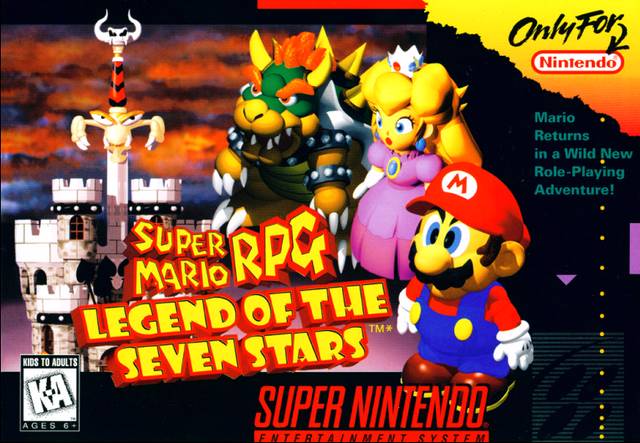
#13. Super Mario RPG: Legend of the Seven Stars
When Nintendo first announced that they would be developing an RPG with the legendary Final Fantasy creators, Squaresoft, the surprise of the public was palpable, and the hype was infective. Just what would these two powerhouse developers cook up together? The answer was one of the best RPGs of the 16-bit generation.
Super Mario RPG recast the titular plumber into an isometric faux-3D world, and had the overbearing gall to not only team him up with Bowser against an even greater evil, but to introduce several new and intriguing characters to his world. The jump mechanics and typical Super Mario Bros. tropes are all cross-coded into a beautiful and inviting RPG world, filled with challenging puzzles, fantastic writing, and tons of fan service. This might not be the most conventional game in the dozens of Mario-centric titles out there, but it’s certainly one of the best. (Mike Worby)
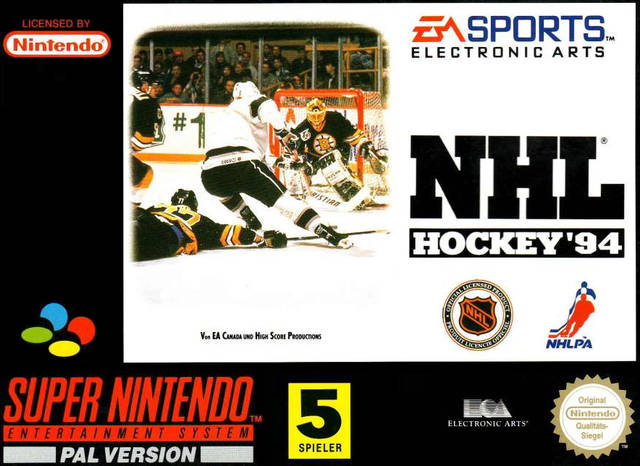
#12. NHL ’94
NHL ’94 was the game that truly defined hockey adaptations in the 16-bit era and to this day, many hockey fans still consider it to be the best hockey game ever made. The game was so refined that many modern versions are still trying to clear the bar it set.
Four-player gameplay was the huge bonus, as was the ’93 NHL roster which featured the likes of Wayne Gretzky, Mario Lemieux, the addition of two teams through league expansion, the sudden prominence of European superstars and of course, the crowning of the Montreal Canadiens as Stanley Cup champions! NHL ’94 is the hockey game that set a standard for what hockey games were to become in the future and even today, online leagues are set up over at NHL94Online.com where players take control of their favorite teams and compete across multiple skill-based leagues of up to 12 teams. (Ricky D)

#11. Super Punch-Out
Super Punch-Out!! had some mighty big shoes to fill in the wake of its predecessor’s worldwide success. The general idea of a sequel is to keep what works with a beloved formula while presenting something new and unique, and Super Punch-Out did just that.
Super Punch-Out set itself apart with its cartoon-like style, and colorful and outlandish opponents such as Aran Ryan, Mad Clown, Super Macho Man and Rick Bruiser, to name a few. The gameplay didn’t change much, but the usage of transparency was added to facilitate the game’s “behind the back” perspective, and like the original Punch-Out, Super Punch-Out is more of a puzzle game, rather than a sports game: Each opponent of the rogues gallery (16 in total, some familiar and others new) has their own unique style of fighting, and more importantly, their own unique weaknesses. You can’t just randomly punch your way through to victory by smashing buttons; players must carefully observe each opponent in order to find their weak spot. Mac’s move set remains simplistic, amounting to left and right jabs, hooks, and dodges, and Doc is still in your corner! Much like its star Little Mac, this is one underdog not to be taken lightly. (Ricky D)

#10. Mega Man X
Capcom made Mega Man fans wait a very long time for the arrival of Mega Man X, releasing the game for the SNES two and a half years after the system’s debut. But when it arrived, it was obvious why it took so long. This wasn’t just another Mega Man game, it was a complete reinvention of the franchise and it blew our young minds. The classic series mythology forms the basis for Mega Man X, but the plot is new – taking place a century after the original Mega Man series with an all-new arch-nemesis named Sigma, and a supporting hero named Zero – a Maverick Hunter/ mechanical soldier who helps X (Mega Man) defeat robots who turned against humanity. With the help of his partner Zero, X must thwart the plans of Sigma and save mankind. The standard run-and-gun action remains intact with traditional attack strategies all carrying over – but this time around players get an assortment of advanced maneuvers like dashing, wall jumping, and instant weapon-swapping. In addition, X can charge his buster and the slide has been replaced with a dash. Furthermore, Mega Man could now increase the length of his health meter — and he could upgrade his suit, piece by piece, to complete a set of new armor (which makes you look more and more like his hero, Zero). If you haven’t yet played this game, give it a try, and find out why Mega Man X is one of the all-time best. There’s so much to say about this game, and why, as a sequel, it is one of the best; but since I’m limited to a number of words I can write, I recommend checking out this amazing video essay. (Ricky D)

#9. Final Fantasy IV
First released in the west as Final Fantasy II, Final Fantasy IV took Square’s role-playing series to new heights. Previous entries included more intensive character customization with a focus on the gameplay, but when Final Fantasy IV landed, it was one of the first truly great adventure stories in all of gaming. Following the main protagonist Cecil Harvey, Final Fantasy IV is an epic tackling themes of love, friendship, betrayal and justice and set the standard for future RPGs not just on the SNES but every contemporary and succeeding console. The cast of characters that join Cecil is varied, each a distinctive personality and useful in different ways in combat. Kain Highwind, a dragoon, remains a fan favorite, and the ever-present Cid of the series makes his first playable appearance as Cid Pollendina.
On top of a superb story, Final Fantasy IV also features a ridiculously good soundtrack from the now legendary Nobuo Uematsu and the first iteration of the Active Time Battle system that would define later entries. Final Fantasy VII often gets cited not just as the best Final Fantasy, but the best video game of all time. Purists, though, tend to look back on the two SNES Final Fantasy games as being series high points—true classics that may be simple in retrospect but that are timeless and effortlessly replayable. At the very least, Final Fantasy IV was the beginning of a new era for storytelling in games. (Sean Colletti)

#8. Super Mario Kart
Super Mario Kart needs little introduction. With almost nine million units sold, it is the third highest selling SNES title and regularly places among the best games of all time. The critical and commercial success allowed Nintendo to release numerous other Mario spin-offs, keeping the franchise alive despite the relative infrequency of Mario platformers.
Whereas later titles focused more on item play – cough, the blue shell, cough – the original Mario Kart was generally about racing. Tracks were carefully designed. There were ideal spots to twist left or right, and although a well-timed feather or a green shell could give you an advantage, skill would see you win the day. It was perfectly possible in lower difficulties to get ahead and stay there without worrying a single hit would bump you back to the last place.
That doesn’t mean Mario Kart was afraid to punish you.
The learning curve was steep. Tracks were easy to learn but hard to master. And the Special Cup Race on 150cc will forever be the stuff of nightmares.
What Mario Kart lacked in kindness it made up for in the intricate design and its fantastic Battle Mode, where two players zoomed around dodging peels and popping each other’s balloons. Rarely has the sound of a balloon exploding been so humiliating.
Also, it should be noted the AI are all unforgivable cheats. Donkey Kong Jr. must be chowing down with one hand on the wheel to have that many banana skins. For a driving gorilla, he sure is good at multitasking. (Luke Geraghty)

#7. Street Fighter II
Like most popular arcade games of the time, Street Fighter 2 inevitably made its way to home consoles. Given Capcom’s publishing history and relationships with Nintendo, it was first ported to the Super Nintendo Entertainment System. The SNES adaptation is probably one of the best arcade-to-console ports in history and despite some minor changes to the graphics and audio (in order to fit into the cartridge), the port is extremely faithful to the original.
It became one of the console’s best sellers and was so successful that Capcom just kept releasing more versions of it. From 1991 to 1994, there were 5 adaptations of Street Fighter II and by 1995, the game had been played by at least 25 million Americans in homes and arcades, while the gross revenues of the console and arcade versions had exceeded $2.312 billion, making it Capcom’s best-selling single consumer game software at the time. Street Fighter II set a standard, popularized the genre, and set off a renaissance for the arcade game industry in the early 1990s. At the time it was groundbreaking and 25 years later it stands the test of time, that any gamer, no matter what their age, can enjoy. (Ricky D)

#6. Earthbound
EarthBound, known as Mother 2 in Japan, was met with poor critical response and sales in the United States, but as the years went by, the game received wide acclaim and was deemed by many a timeless classic. It has since become one of the most sought-after games in the second-hand market, selling for upwards of $300 for the cartridge alone. The second game of the Mother series (the first was never released in the English language), follows Ness and his party of four, traveling the world to collect melodies en route to defeating the evil alien force known as Giygas.
While EarthBound’s overall gameplay feels like a traditional Japanese RPG of the era, the game breaks from tradition through its setting: a world of 90’s Americana seen from a Japanese point of view. Nothing stands out quite like its visual style – an 8-bit presentation powered by a 16-bit processor. The graphics might not be as advanced as some of the other 16-bit titles available on the SNES, but it is certainly among the most memorable. The SNES was home to some amazing soundtracks, but EarthBound’s soundtrack remains the best. Created by four composers, there’s enough music here to fill 8 of the 24 megabits on the cartridge – with direct musical quotations of classical tune and folk music, and a few samples culled from commercial pop and rock. EarthBound is not only one of the most unique and refreshing RPG experiences ever made but also one of the most entertaining as well.
Holding onto an incredibly dedicated cult following, the main character Ness became a featured character in the Super Smash Bros. series and in 2013, EarthBound was reissued and given a worldwide release for the Wii U Virtual Console following many years of fan lobbying. Of all the games I own on the Super NES, Earthbound is the game I treasure the most. (Ricky D)

#5. Super Mario World
Every great sequel finds the latent potential in its predecessor and expands upon it. Super Mario Bros. 3, on the Nintendo Entertainment System, had introduced maps to connect groups of individual levels, but its different worlds remained disconnected. There was no consistent universe or geography, so the mapped environments were not as immersive as they could have been. Super Mario World corrected this missed opportunity, as its name implies. There’s just one world and players must move through it. When they advance to the next area, they deepen their understanding of the place they’re already in – rather than starting over from scratch in yet another surreal landscape.
This geographical cohesiveness conveys the length and texture of a journey. There’s a good reason epic fantasy novels tend to include detailed maps, and Tolkien wasn’t merely wasting his time and ours by including lengthy descriptive passages in The Lord of the Rings. If travel is an important theme, then players, viewers, or readers should understand the lay of the land. Otherwise, all that walking and voyaging is just an abstraction, a bunch of lines on a blank grid.
Of course, this is a platformer, not a role-playing game. The emphasis is on the platforming challenges, the flawless and responsive controls, the bright colors and relatively sharp character models that demonstrated what the SNES could do. Geographical cohesiveness is not as important as it might be, say, in a Zelda title. And in fact, subsequent Mario installments, on the Nintendo 64 and the Wii, would return to the Super Mario Bros. 3 formula, with their teleporting doors to distant provinces. (Super Mario Sunshine, with its expansive island, is an exception.) But the vastness of the world in Super Mario World, the excitement of uncovering new continents or transforming the surrounding topography, is one of the main reasons it’s so beloved.
Platformers are basically about players’ relationship to virtual environments, so taking a page (or more) from the mapped journeys of epic fantasy proved to be an inspired, brilliant, and enduring design strategy. (Guido Pellegrini)

#4. Final Fantasy VI
Though Final Fantasy VII is often cited as the game which changed Final Fantasy forever, a strong argument can be made for Final Fantasy VI as the proper bearer of such a title. Up to this point in the series, each of the installments had been placed in a decidedly medieval setting. From the jaw-dropping, pseudo-3D, opening moments of FFVI, it’s clear that all of that has changed. Mechs, firearms, and a variety of technologies that ride the line between science-fiction and steampunk all make their Final Fantasy debuts here.
This is also one of the series’ darkest entries with characters who contemplate suicide, several major deaths, and an insanely malicious villain who actually succeeds completely in his horrifying plan by the games halfway point. With the largest and most diverse cast of the entire Final Fantasy franchise, some haunting and emotional music from longtime composer Nobuo Uematsu, the best set of side-quests ever delivered, and a wildly intense final battle, Final Fantasy VI is, without question, a series standout. (Mike Worby)

#3. The Legend of Zelda: A Link to the Past
If it isn’t broken, don’t fix it. While Zelda II: The Adventure of Link was an interesting departure from the style of The Legend of Zelda, the 1991 SNES game A Link to the Past took the original game of the series and perfected what was already there. A Link to the Past isn’t necessarily innovative. Unlike Ocarina of Time, it didn’t usher in a whole new experience for gamers. But for many, A Link to the Past is the definitive Zelda game (and one of the best video games of all time) because of how utterly streamlined and polished it is.
Everything that was fun and exciting about The Legend of Zelda is here tenfold: an arsenal of neat items at your disposal, an expansive world full of memorable settings and enemies, cleverly-designed puzzles, challenging boss battles and the general feeling of the epic quest (aided by the soundtrack) that puts the “Legend” into the title. The Legend of Zelda: A Link to the Past is just pure, simple gaming at its height, where every little piece comes together flawlessly to create the ultimate action-adventure experience.
The game was re-released for the Game Boy Advance and received a follow-up for the 3DS (A Link Between Worlds), solidifying its place in the canon of not just the Zelda series, but as one of Nintendo’s finest products of all time. (Sean Colletti)
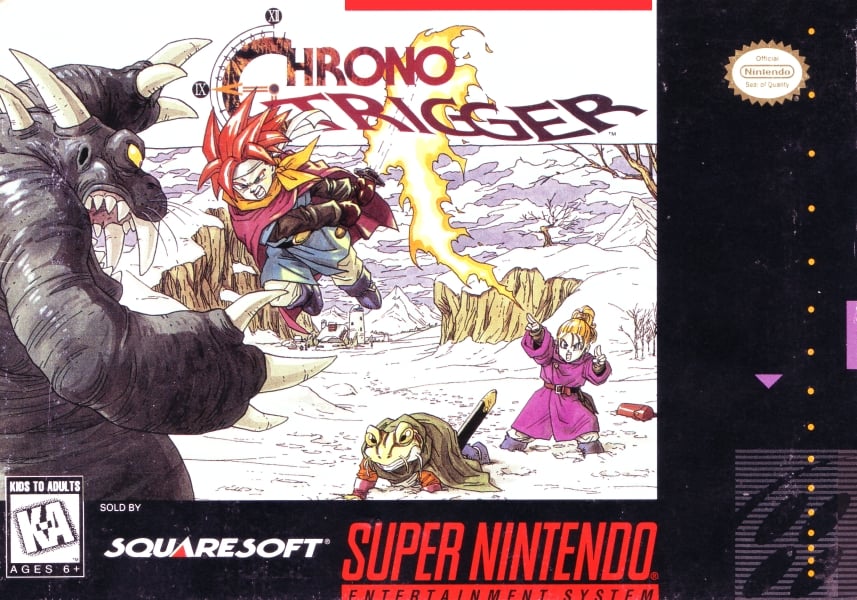
#2. Chrono Trigger
Square’s Chrono Trigger was always destined to be interesting, to say the least. Made by a dream team of key developers from both Square and Enix (years before those companies would merge), Chrono Trigger combines the battle system of Final Fantasy with the lighter tone of Dragon Quest, and the high-quality visuals of both series. Add in Dragon-Ball-creator Akira Toriyama’s art and a rousing score by Yasunori Mitsuda, and you have a recipe for something wonderful.
Actually playing the game, however, the gamer realizes that it is not “just” another great 1990s release from Square – it’s a meticulous masterclass in design that goes against many JRPG conventions, while still serving up a classic tale of action and adventure.
In a genre where unwieldy length is typical, Chrono Trigger clocks in at a relatively brief (and much more digestible) 20 hours. In a time where battles would flash to a separate screen to showcase highly detailed monster sprites, Chrono Trigger instead had its monsters appear in the field. The player could even avoid some fights by just walking around them. Combined with a touching story and funny, lovable characters, Chrono Trigger is an outstanding example of a studio at the top of its game, like the Finding Nemo to Square’s Pixar.
So what more can be said about a game so beloved?
How about proof of its enduring quality? I have a confession to make: I never owned a SNES, and I didn’t play Chrono Trigger until I was already out of high school, fifteen years after its release. Today, I still unreservedly call it one of the best games I have ever played. (Mitchell Akhurst)

#1. Super Metroid
One of the things most notable about Super Metroid is its profound and effective sense of atmosphere. Few games have managed to make an alien world that feels so strange and surreal as the planet Zebes does here. Though the evocative music goes a long way to establishing the sad and decaying world, points must be given to the design team who really nail the deliberate strangeness of the creature and area layouts.
What makes Super Metroid such a strong experience is its uninhibited use of wordless story-telling to craft an emotionally-engaging narrative which casts two characters as mothers and creates an intense dichotomy and rivalry between them, culminating in an unforgettable battle over a savage but innocent child.
In the nuts and bolts department, the gameplay is wildly inventive, utilizing the power-up based exploration mechanics which were introduced in previous installments, Super Metroid takes an everything and the kitchen sink approach to growing your character, wherein you start off as a pellet-firing weakling and end the game as an invincible, hyper-driven, flashing, super-speeded, infinite-jumping juggernaut. Add to that the fact that you’re playing as the most badass bounty hunter in the galaxy, and Super Metroid equals pure gaming bliss. If you want a game that absolutely lives up to all of its hype and more than you need to play Super Metroid. (Mike Worby)
Be sure to also check out:
The Best Game Boy Games that Stand the Test of Time
The Best Game Boy Advance Games
The Best Nintendo Switch Games

-

 Features4 weeks ago
Features4 weeks agoGet Ready: A Top Isekai Anime from the 2020s Is Headed to Hulu!
-

 Features3 weeks ago
Features3 weeks agoSocial Gaming Venues and the Gamification of Leisure – A New Era of Play
-

 Features3 weeks ago
Features3 weeks agoSolo Leveling Snubbed?! You Won’t Believe Who Won First at the 2025 Crunchyroll Anime Awards!
-

 Culture3 weeks ago
Culture3 weeks agoThe Global Language of Football: Building Community Beyond Borders
-

 Technology4 weeks ago
Technology4 weeks agoIs Google Binning Its Google Play Games App?
-

 Technology4 weeks ago
Technology4 weeks agoHow to Download Documents from Scribd
-

 Guides4 weeks ago
Guides4 weeks agoBoosting and WoW Gold: Why Prestige and Efficiency Drive the Modern MMO Player
-

 Technology2 weeks ago
Technology2 weeks agoGamification and Productivity: What Games Can Teach SaaS Tools
-

 Features2 weeks ago
Features2 weeks agoFarewell to a Beloved 13-Year-Old Isekai Anime That Brought Us Endless Laughter
-

 Features1 week ago
Features1 week agoThis Upcoming Romance Anime Might Just Break the Internet; Trailer Just Dropped!
-

 Features3 weeks ago
Features3 weeks agoWait, What?! Tom & Jerry Just Turned Into an Anime and It’s Glorious!
-

 Culture2 weeks ago
Culture2 weeks agoIs the Gaming Industry Killing Gaming Parties?























Rogerio Andrade
September 10, 2019 at 10:35 am
What a great list, but the lack of International Superstar Soccer 2 really puzzles me …
It´s one of the best sports game in the SNES, probably the best. It tops any EA efforts with lots of play modes, great animations and soundtrack, excellent controls – which is the base that PES uses to this day – easy to pick-up and play, multiplayer up to 4 people …
Perhaps its absence is due to the low popularity of the game in the U.S.? It´s kind of dissapointing to not see it in this list, since that game was very popular in Latin America and Japan and was well-known in Europe too.
Ricky Fernandes da Conceição
September 10, 2019 at 1:09 pm
I know I voted for International Superstar Soccer as did a few other writers.
The problem when making a best gaming list is that many gamers don’t play sports.
There have been many years in which I think a sports game belongs on the best of the year list but ot enough people voted for it.
But yes, I agree, International Superstar Soccer should be on the list. I’d easily replace one of the Star Wars titles.
Derek
May 21, 2022 at 2:42 am
I think Earth Bound was best game of all time.